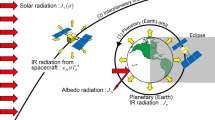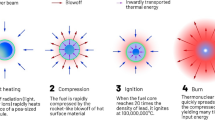Abstract
The New Horizons spacecraft was launched on 19 January 2006. The spacecraft was designed to provide a platform for seven instruments designated by the science team to collect and return data from Pluto in 2015. The design meets the requirements established by the National Aeronautics and Space Administration (NASA) Announcement of Opportunity AO-OSS-01. The design drew on heritage from previous missions developed at The Johns Hopkins University Applied Physics Laboratory (APL) and other missions such as Ulysses. The trajectory design imposed constraints on mass and structural strength to meet the high launch acceleration consistent with meeting the AO requirement of returning data prior to the year 2020. The spacecraft subsystems were designed to meet tight resource allocations (mass and power) yet provide the necessary control and data handling finesse to support data collection and return when the one-way light time during the Pluto fly-by is 4.5 hours. Missions to the outer regions of the solar system (where the solar irradiance is 1/1000 of the level near the Earth) require a radioisotope thermoelectric generator (RTG) to supply electrical power. One RTG was available for use by New Horizons. To accommodate this constraint, the spacecraft electronics were designed to operate on approximately 200 W. The travel time to Pluto put additional demands on system reliability. Only after a flight time of approximately 10 years would the desired data be collected and returned to Earth. This represents the longest flight duration prior to the return of primary science data for any mission by NASA. The spacecraft system architecture provides sufficient redundancy to meet this requirement with a probability of mission success of greater than 0.85. The spacecraft is now on its way to Pluto, with an arrival date of 14 July 2015. Initial in-flight tests have verified that the spacecraft will meet the design requirements.
Similar content being viewed by others
References
U. Carlsson, in Seventh European Space Power Conf., SP-589, vol. I, 2005
A. Cheng et al., Space Sci. Rev. (2008, this issue). doi:10.1007/s11214-007-9271-6
R.D. Cockfield, in 4th Int. Energy Conversion Eng. Conf. Exhibit (IECEC), San Diego, CA, 26–29 June 2006
C.C. DeBoy et al., Acta Astron. 57, 540–553 (2005). doi:10.1016/j.actaastro.2005.03.051
K. Fretz, Internal Memorandum SEA-2005-075, The Johns Hopkins University Applied Physics Laboratory, Laurel, MD, 2005
B.A. Harmon, W.A. Bohne, Space Technol. Applications Int. Forum, Albuquerque, NM, 11–15 February 2007
M. Horanyi et al., Space Sci. Rev. (2008, this issue)
J.F. Jensen, R.S. Bokulic, IEEE Trans. Aerosp. Electron. Syst. 36(4), 1401–1406 (2000). doi:10.1109/7.892689
D. Kusnierkiewicz et al., Acta Astron. 57, 135–144 (2005). doi:10.1016/j.actaastro.2005.03.030
D. McComas et al., Space Sci. Rev. (2008, this issue). doi:10.1007/s11214-007-9205-3
R.E. McNutt et al., Space Sci. Rev. (2008, this issue)
NASA: Final Environmental Impact Statement for the New Horizons Mission, National Aeronautics and Space Administration, July 2005
G.K. Ottman, C.B. Hersman, in 4th Int. Energy Conversion Eng. Conf. Exhibit (IECEC), San Diego, CA, 26–29 June 2006
D. Reuter et al., Space Sci. Rev. (2008, this issue)
G.D. Rogers et al., Autonomous Star Tracker Performance. Valencia Papers, 2006
R.C. Schulze, S. Hill, in IEEE Aerospace Conf., Big Sky, Montana, vol. 2 (2004), pp. 966–974
S.A. Stern, Space Sci. Rev. (2008a, this issue)
S.A. Stern, Space Sci. Rev. (2008b, this issue). doi:10.1007/s11214-007-9295-y
J. Stratton, in 55th Int. Astronautical Congress of the Int. Astronautical Federation, Int. Academy of Astronautics, Int. Institute of Space Law, Vancouver, Canada, 4–8 October 2004
L. Tyler et al., Space Sci. Rev. (2008, this issue). doi:10.1007/s11214-007-9302-3
H.A. Weaver et al., Space Sci. Rev. (2008, this issue)
K.-P. Wenzel, R.G. Marsden, D.E. Page, E.J. Smith, Astron. Astrophys. Suppl. Ser. 92(2), 207–215 (1992)
Author information
Authors and Affiliations
Corresponding author
Rights and permissions
About this article
Cite this article
Fountain, G.H., Kusnierkiewicz, D.Y., Hersman, C.B. et al. The New Horizons Spacecraft. Space Sci Rev 140, 23–47 (2008). https://doi.org/10.1007/s11214-008-9374-8
Received:
Accepted:
Published:
Issue Date:
DOI: https://doi.org/10.1007/s11214-008-9374-8




